Complaint letter to hr template
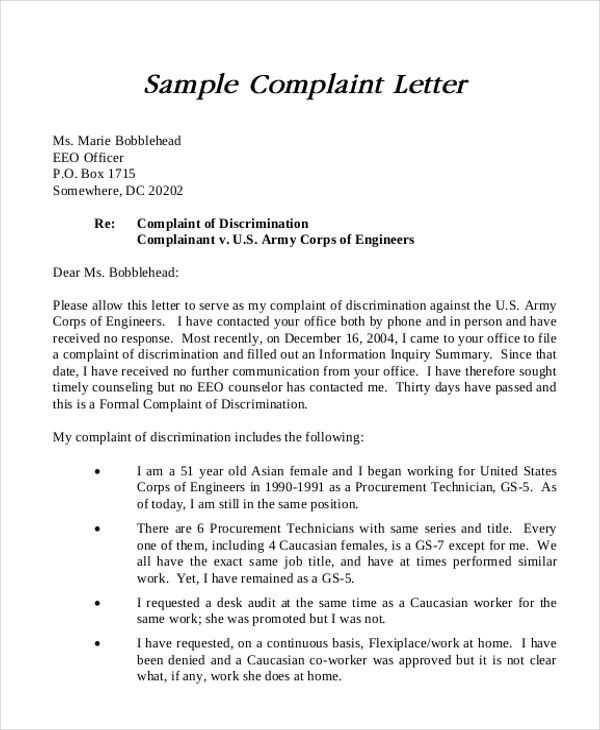
Begin your complaint letter by addressing the issue directly. Make sure to be clear and concise, stating the specific concern you wish to address. Use factual language and avoid making emotional statements. This will help HR understand the matter quickly and ensure your letter remains professional.
Provide all necessary details in an organized manner. For example, include dates, times, and locations where the issue occurred. If possible, reference any previous conversations or actions taken regarding the matter. This will give HR a complete understanding of the situation.
End the letter by clearly stating what action you would like HR to take. Be polite but firm in your request. It’s important to stay respectful throughout the letter while also being assertive about what needs to be addressed.
Complaint Letter to HR Template
Write a clear and concise subject line to grab attention. State your purpose immediately–whether it’s about a workplace issue, behavior, or an unresolved problem. Directly mention the nature of the complaint and keep it brief.
Structure of the Complaint
Start with a polite greeting, addressing the HR manager by name if possible. Keep the tone professional but assertive. Explain the situation or incident that led to your complaint, including specific dates, times, and locations. Provide facts rather than opinions to ensure clarity.
Provide the context of the issue and how it has affected your work or the team. If applicable, mention any attempts you’ve made to resolve the matter before escalating it. If others are involved, be sure to mention them, keeping personal details private.
Suggested Conclusion
End with a clear request for resolution. Be respectful but firm in stating what action you expect HR to take. Offer your willingness to meet and discuss further if necessary, and thank them for their attention to the matter.
Always proofread your letter before sending. A well-structured and straightforward complaint ensures that HR can address the issue promptly and effectively.
How to Begin Your Complaint Letter
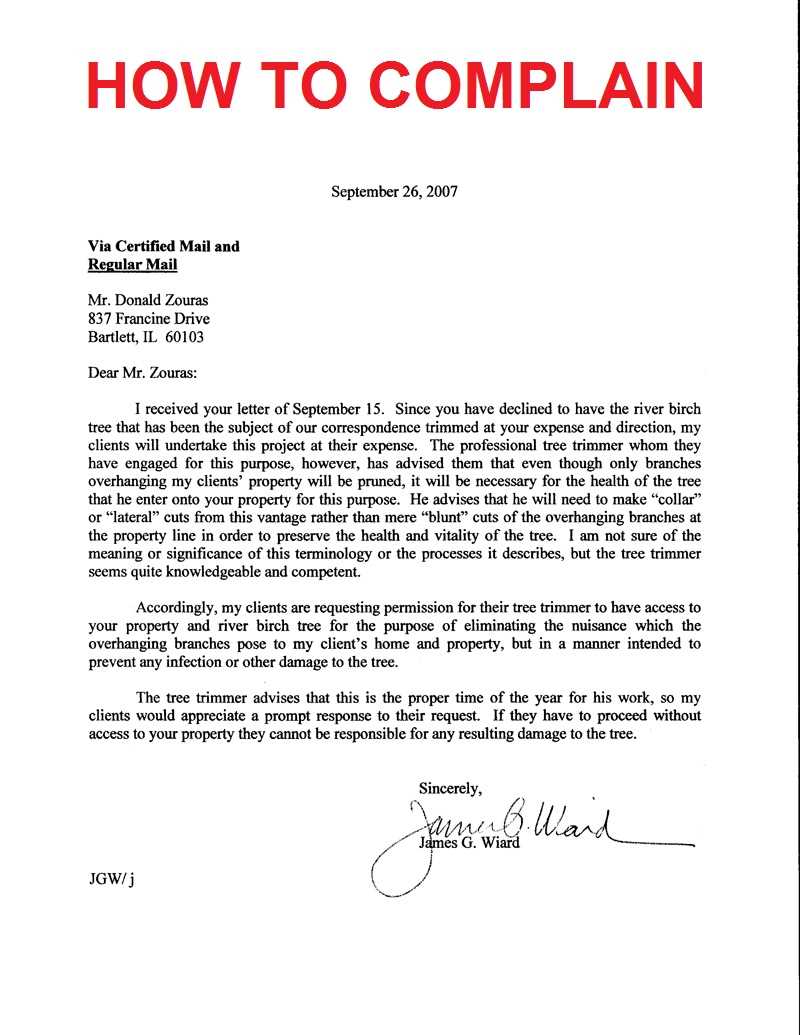
Begin by clearly identifying yourself and your position within the company. Start with a formal greeting, addressing the recipient by name or title, such as “Dear [HR Manager’s Name]”. Be direct and concise in stating the purpose of your letter. Mention the issue you’re facing, and if relevant, include specific dates and events. This will help establish the context from the start.
Example: “I am writing to formally address an ongoing issue that has been affecting my work environment. This situation has occurred repeatedly since [date], and I feel it is important to bring it to your attention.”
Next, express your concerns clearly, focusing on the facts and avoiding unnecessary emotional language. This helps to maintain a professional tone throughout your letter. If applicable, mention any steps you’ve already taken to resolve the issue on your own.
Example: “Despite several attempts to resolve this matter directly with [name or department], the situation has not improved, and I am seeking HR’s assistance in addressing the matter.”
Keep the opening brief and to the point, while maintaining a respectful tone throughout. The goal is to provide HR with enough information to understand the issue without overwhelming them with unnecessary details.
Structuring Your Complaint Clearly
Begin by stating the issue in a straightforward manner. Specify what happened, where and when it occurred, and who was involved. This will give your complaint a clear context from the start, so there’s no ambiguity.
Provide Key Details
Next, focus on the specific facts that support your complaint. Mention any relevant policies or rules that were violated. If there’s evidence, such as emails or records, refer to it briefly without overwhelming the reader with unnecessary details.
State the Desired Outcome
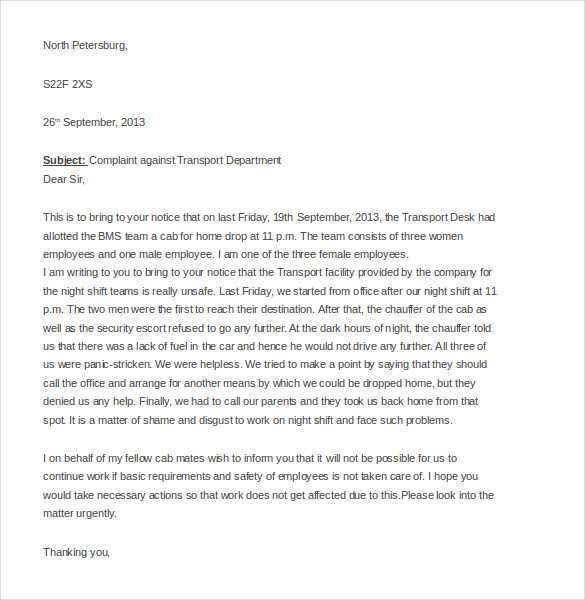
End your complaint by clarifying what you hope to achieve. Whether it’s a resolution, an apology, or further action, being clear about your expectations will help HR understand your needs and how they can assist.
Choosing the Right Tone and Language
Keep your tone respectful and professional. Focus on the issue, not personal emotions, to maintain a clear and objective approach. Ensure your language is straightforward, avoiding overly complex terms or jargon that may distract from your message. Use polite language that conveys your concern without sounding accusatory or overly harsh.
Here’s a table to help you navigate the dos and don’ts of tone and language in your complaint letter:
| Dos | Don’ts |
|---|---|
| Use neutral language | Avoid emotional language |
| Be clear and concise | Do not exaggerate or overstate |
| Be polite and respectful | Refrain from insults or rude comments |
| State facts and specific details | Avoid generalizations |
Stay focused on the issue and how it affects your work or the workplace, rather than making personal attacks or expressing frustration. This makes your complaint more likely to be taken seriously and encourages a constructive response.
Including Necessary Supporting Evidence
Attach clear, relevant evidence that strengthens your complaint. This shows your case is based on facts, not assumptions. Include emails, screenshots, or any documented incidents that support your claims. Be specific about dates, times, and individuals involved.
Types of Evidence to Include
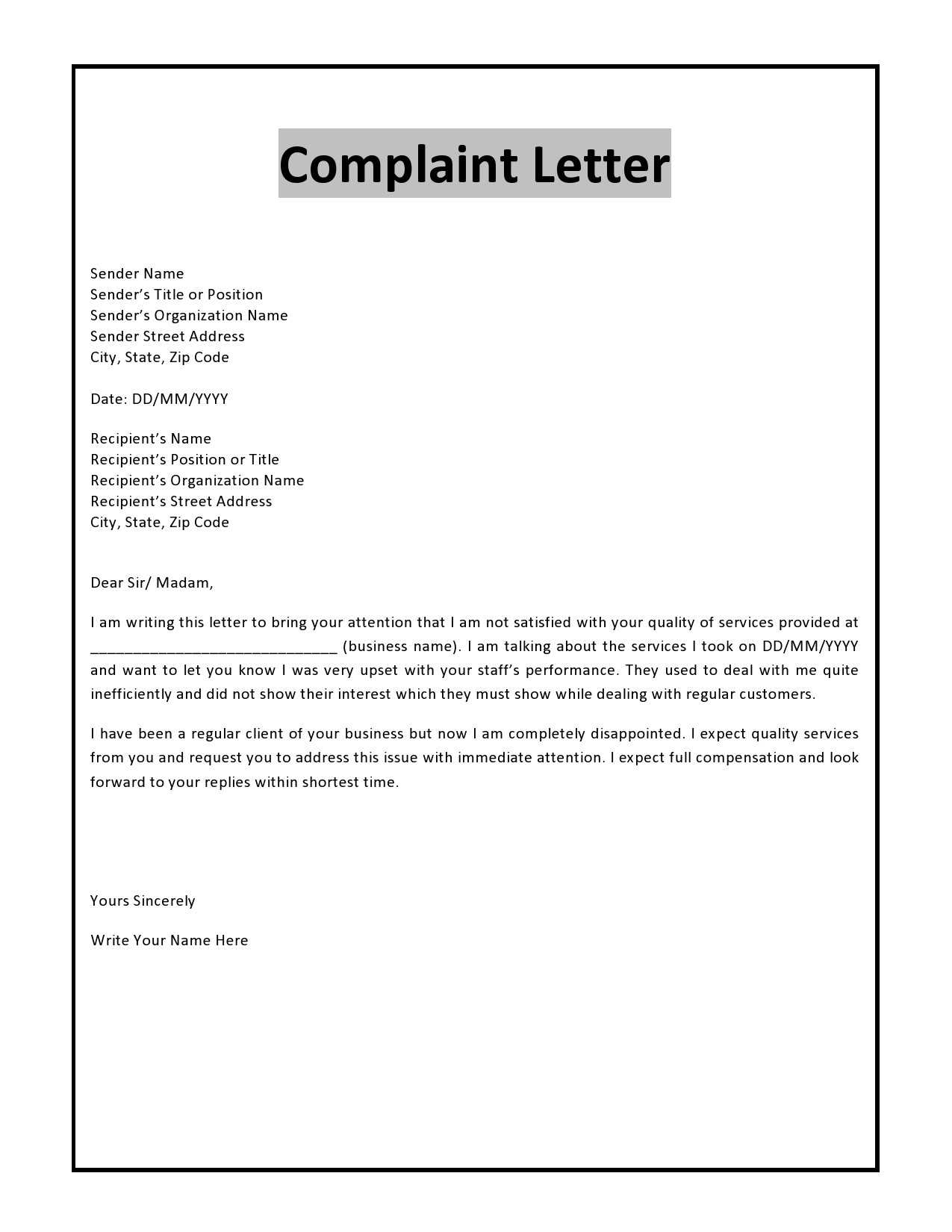
- Emails: Provide email threads that demonstrate communication regarding the issue.
- Screenshots: Use images to highlight problematic messages, documents, or system errors.
- Witness Statements: If others witnessed the issue, ask them for a written account of what occurred.
- Official Reports: Attach any formal reports, like incident logs, that document the situation.
Organizing Your Evidence
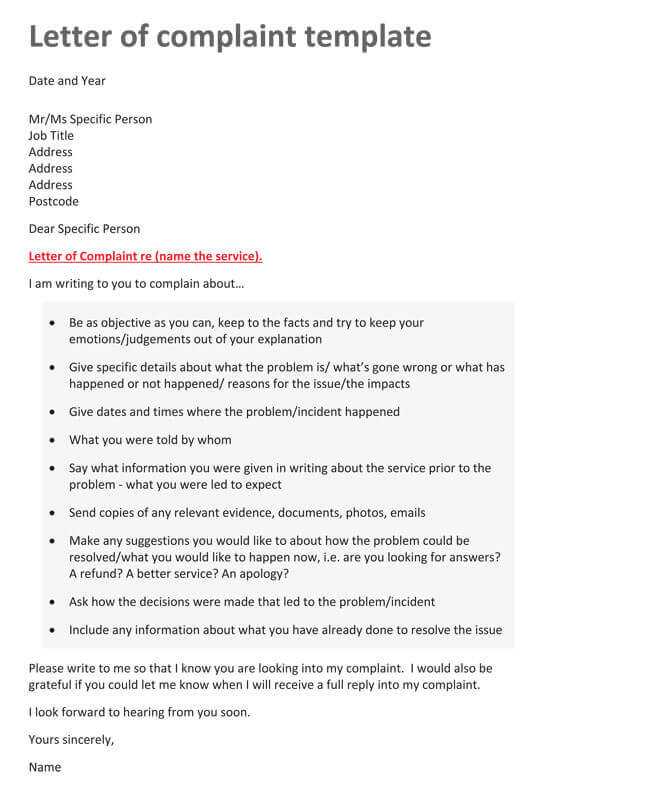
Arrange your evidence chronologically. Label each document or image to explain its relevance. Avoid including unrelated material that could distract from your main point. This makes it easier for HR to understand the situation and take appropriate action.
How to Express Desired Outcomes
Clearly state your desired resolution at the beginning. Specify what actions you want the HR team to take and why. Whether it’s resolving a scheduling conflict, addressing workplace behavior, or clarifying a policy, provide a concise request that reflects your needs. This avoids ambiguity and gives HR a clear direction on how to proceed.
Avoid vague or overly general statements. Instead of saying “I want things to improve,” describe exactly what changes would meet your expectations. For example, “I’d appreciate it if we could adjust the work schedule to avoid overlapping shifts.” This type of clarity helps HR understand your perspective and take specific action.
Be realistic with your expectations. Understand the company policies and limitations when making requests. Express what is reasonable within the given context, showing flexibility where needed. A well-grounded approach is more likely to receive a positive response from HR.
Finally, emphasize the importance of your request in the context of the workplace. For instance, mention how your proposal can improve productivity or team dynamics. This shows that you are not only thinking about your own needs but also considering the company’s overall environment.
Review and Edit Before Sending
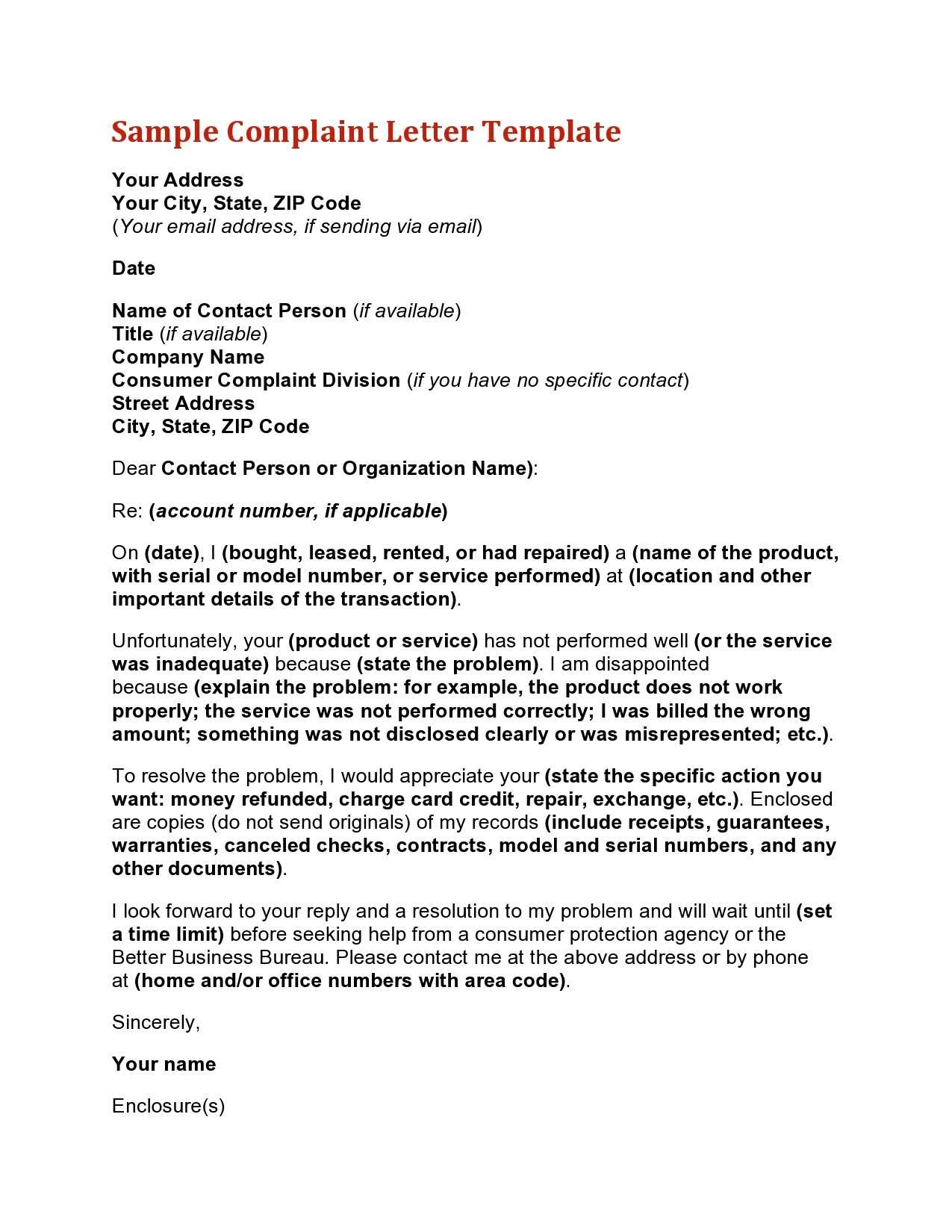
Check for spelling and grammatical errors. Use a spell checker, but also read through the letter manually to catch any mistakes the tool may have missed.
Ensure the tone is professional and clear. Avoid emotional language and focus on stating the facts. If needed, rephrase sentences that may sound harsh or overly critical.
Verify the accuracy of the information included. Double-check dates, names, and any specific incidents mentioned in the letter. A well-documented complaint adds credibility.
Review the structure of your letter. Make sure it’s concise and to the point. Eliminate any unnecessary details or repetitive points to keep the message focused.
Ensure the recipient’s details are correct. Double-check the HR department’s contact information and any relevant references in the company.
Consider getting a second opinion. Have someone else review the letter to ensure clarity and effectiveness. They may spot things you missed or offer helpful suggestions.